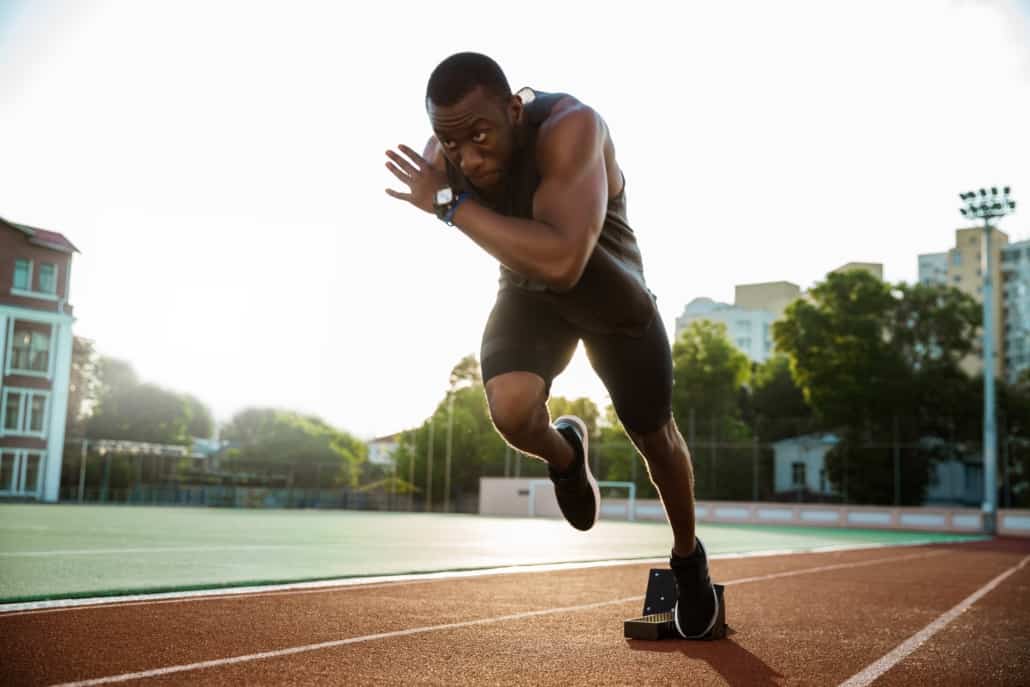Contents
- Introduction
- Speed development: How it can be a game-changer
- Why correct running mechanics are vital
- How to assess running mechanics: The 4 Ps
Introduction
Running mechanics are crucial for improving running economy, injury prevention and maximising athletic potential. Team sport athletes don’t need to aim to be 100m sprinters, but sprinting techniques can help any athlete generate more force. The 4 P’s – Posture, Positioning, Placement, Patterning – provide a framework to categorise drills, allowing coaches to emphasise particular components of running mechanics with athletes.
We spoke to Nathan Griffith who is currently the head of academy strength & conditioning at Oxford United FC and undertaking a PhD at the University of Birmingham, understanding and evaluating the relationship between acceleration and deceleration within academy football to find out more.

Speed development: How it can be a game-changer
Running with the right technique is vital for athletes and, with the correct mechanics, they can maximise their speed and ability to perform sport-specific actions. And perhaps more so than ever before, speed is essential as the pace of play in many team sports has increased exponentially in recent years, with athletes, coaches, and teams focusing more on speed development year-on-year, leading strength and conditioning coach Nathan Griffith says.
“Speed is such an important part of team sports and so ensuring your athletes have the right running mechanics is key to ensuring they can compete at the required level of competition. The correct technique leads to improved performance and athletic development,” Nathan Griffith said.
Why correct running mechanics are vital
According to Griffith, running with the correct mechanics has the following three benefits:
- Running economy
“The right mechanics improve an athlete’s economy, which is how efficiently they run. With a high running economy, athletes are able to maintain sub-maximal velocity for longer periods of time, enabling them to work harder for longer,” explained Griffith.
- Injury prevention
Griffith continues, “Coaching the correct technique reduces the risk of injury. At high speed, incorrect technique can expose athletes to a high risk of hamstring injuries, something to be avoided. It is essential to coach ground contact and [foot] strike on the floor.”
- Maximising athletic potential
“Using the correct mechanics ensures you are optimising your athletes’ ability to deliver maximum speed. Through maximum speed, you can improve true athletic potential by allowing your athletes to produce high quality speed movements,” mentioned Griffith.
How to assess running mechanics: The 4 Ps
Before an athlete can implement the right running mechanics, it is important to understand any technical deficiencies.
“We are not training our athletes to become 100m sprinters; however, we are taking qualities out of sprinting which improves technique, thus enabling an athlete to improve their capacity of developing force,” explained Griffith.
To assess running mechanics, the leading strength and conditioning coach suggested a 4 P’s framework – posture, positioning, placement, patterning.
“The 4 P’s enable coaches to categorise drills, allowing them to emphasise particular components of running mechanics within their athletes,” he said.
Posture relates to an athlete’s body alignment and ensuring force is directed towards the desired direction.
“Poor posture will limit their potential, and under- or over-reaching will increase the risk of injury. If aligned properly, athletes can generate maximum force,” said Griffith. “To assess alignment, take a ground-to-head approach to assess your athlete’s body alignment. You should identify if their striking leg is directly underneath their hip at the point of ground contact.”
Positioning explains the angles and mobility of the body’s joints during the mechanics of running.
“All athletes have elastic potential, and the correct running mechanics maximises this elasticity. The desired flexibility and mobility to produce sprinting force can be seen in exercises like repetitive pogo jumps,” he said.
Placement is wholly related to strike and ground contact. Are athletes striking the ground with the correct foot placement?
“For effective placement, understand the angle of the shin and the dorsiflexion at the ankle joint. You want to see a positive shin angle to get the maximum output. Plyometric exercises like bounding are a great way to assess the positions your athletes get into,” suggested Griffith.
“You should also consider if your athletes are excessively bending their knees at the point of ground contact as you want to maximise the stretch-shortening cycle.”
Patterning concerns the rhythm and tempo of an athlete’s movements.
“Actions should be worked in coordination with each other. For example, your arms need to work with your legs to form a pattern that is seamless. Where possible, encourage coordination to avoid awkward movements in isolation, since awkwardnesses may cause a decline in performance as the body transitions through specific movements,” said Griffith.




